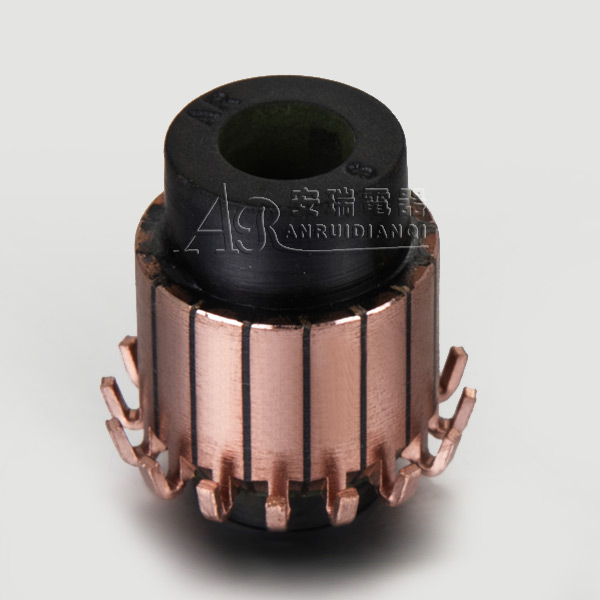

1. DC motor commutator
The commutation of a DC motor refers to the process of changing the direction of the current in the component when the rotating armature winding component passes from one branch to another branch through the brush (referred to as commutation). In the process of changing the direction of the current, a spark is generally generated between the brush and the commutator, which is the main cause of difficulty in commutation and failure. Therefore, the standard divides the motor into several levels (1, 5/4, 3/2, 2, 3) according to the spark size when commutation. For continuous working DC motors, the commutation spark should not exceed 3/2. The DC motor for electric bicycles is a continuous working motor and should meet the requirements of no more than 3/2 sparks. The standard stipulates: When the spark is level 3/2, most or all of the brush edges have weak sparks, so there are black marks on the commutator, but it will not continue to develop. It can be removed by rubbing the surface with gasoline. There are slight burn marks on the brush, which will not affect the continuous normal operation of the motor.
2. Reasons affecting commutation
Why does spark occur during the commutation process of DC motor? According to theoretical and practical analysis, there are many reasons that affect commutation, including electromagnetic, mechanical, electrochemical, etc., and they affect each other, which is very complicated. I am not going to do too much analysis in theory, but only do some analysis on the problems that should be paid attention to in the production of DC motors for electric bicycles to improve the commutation, which may guide production.
3. Electromagnetic reasons
During commutation, reactance potential and commutation potential are generated in the commutation element. The sum of these potentials is generally greater than zero, which is called delayed commutation. When commutation, when the back brush side leaves one commutator segment and turns to another adjacent commutator segment, the commutation current is not zero, and there is electromagnetic energy stored in the commutation element. When the previous commutator segment leaves the brush , The reversing circuit is suddenly cut off, the electromagnetic energy in the reversing element can only break through the air and be released, thereby generating sparks.
